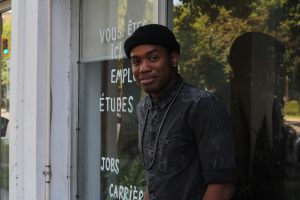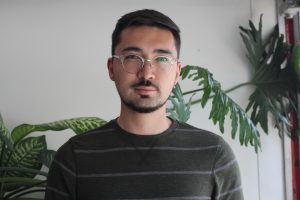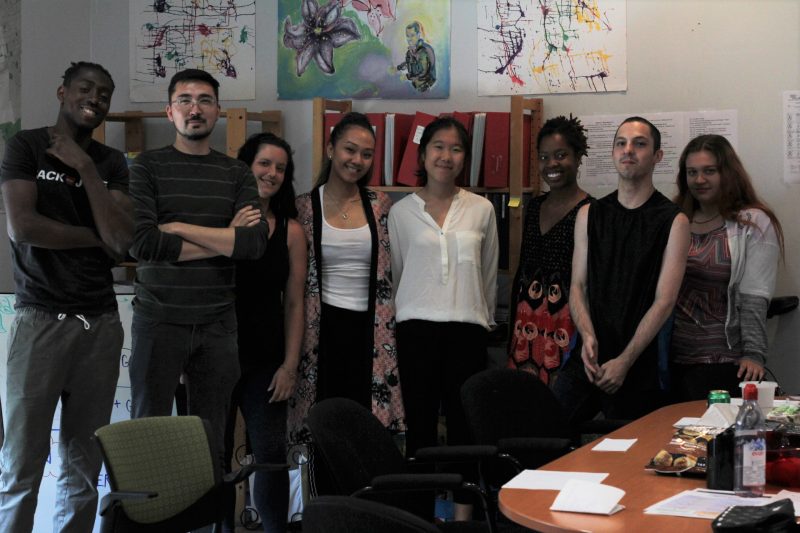For two decades, Carrefour Jeunesse-Emploi Notre-Dame-de-Grâce (CJE NDG) has helped youth gain autonomy in their lives. The centre is located a few blocks away from the Loyola campus in the heart of NDG, on corner Sherbrooke Street and Benny Avenue.
“Everyone who walks through this door is either underemployed or unemployed,” said Concordia alumna and youth worker at CJE NDG, Lynn Worell. “Income has a direct link to your class, your class has a direct link to what your resources are, your resources have a direct link to your quality of life and how you experience this world in your life time.”
The CJE is a nonprofit organization that specializes in employment service support. They focus on youth aged between 16 to 35 who live in NDG, Côte Saint-Luc, Hampstead and Montreal Ouest. The nonprofit has served over 12,000 participants through their in-house programs and services.
Worrell has been working as a youth worker at the CJE for 10 years. She’s currently working with a program called Service Specialisé Jeune (SAE) which focuses on adults aged between 18 to 29 years old.

“Eighteen is a really challenging year,” said Worell. “It’s the year that you get kicked out of group homes. It’s the year that your mom stops getting [child benefit] bonuses and might put pressure on you for paying rent. It’s the year where you no longer qualify for juvenile detention anymore.”
The youth workers at the CJE go beyond their mandate to help people with job placements. They offer participants guidance for pursuing their education, finding a job, psychological support, resources for mental health services and workshops to gain essential life skills.
“I’ve done things like accompany people to court, I even drove all the way to Granby to a rehabilitation centre to check up on a client,” said Worell. “I set people up with lawyers, I brought people to domestic violence services.There’s a lot of different things that I do when it comes to accompanying my clients.”
Worell redesigned the SAE program for participants to have a better sense of belonging. Initially, the program demanded participants to attend six hours per week. Worell changed it to 15 hours per week.
“We made attendance really important because if you send a message to young people that it doesn’t matter if they come or not, then they are going to feel that it doesn’t matter if they come or not,” said Worell.
Within the SAE program there are two project leaders; Tima Khan and Jonathan Platt. Both are youth workers leading a project called Group 9. Alongside them was intern Van Leap Sry, a McGill student studying social work who assisted Khan and Platt in coordinating workshops and activities for the participants.
The Group 9 project consists of meeting the participants one-on-one, asking them what they are looking for, and creating an action plan on how to reach their goals. The group meets on Wednesdays, Thursdays, and Fridays for a total of 15 hours per week. They work on achieving their goals while attending cultural activities and workshops.
“It’s not just [the participants] coming in, sitting down, doing a job search and working on their CV,” said Leap Sry. “It’s also a lot of cultural activities. All the workshops are really for them to get to know a bit more about themselves and to reflect on their everyday life.”
Activities include going to the gym, yoga, and volunteering at local partner’s of the CJE NDG, such as the NDG Food Depot.
“The idea is that we are looking to reintegrate or integrate young adults who are facing different challenges to employment stability,” said Platt. “Whether it is someone who has a hard time keeping a job or someone who is looking to reorient their career in some other way. What I’ve seen quite often is pretty significant mental health issues that are barriers and that might not be recognized by the government or the employer.”
For Khan, what is most rewarding is when the participants see fruition from their hard work.

“[The participants] have different stories, but the outcome is that they see results in themselves,” she said. “They see themselves being capable of doing more than they initially thought.”
The programs offered by CJE NDG such as Group 9 has helped a number of youth through difficult times.
“It helped me feel less alone in my struggles,” said participant of the Group 9 project, Ki Val.
“Being able to be physically present with other people, hearing about their own stories and their own struggles — that helps you realize that what you are going through, you are not going through alone. It’s very hard to realize that sometimes you need to take steps to get help. It’s insane how I didn’t realise how much I needed this.”
“The environment here is quite productive,” said Ricardo Gomez, another participant, who attended the program for the third time. “To be surrounded by people who all have their different goals, we are not linked to each other in any way except for our need to move forward and that has a very uplifting effect.”
CJE NDG has a lot of community support from nonprofit organization Head & Hands and other neighboring groups. However, there isn’t enough individuals signing up for the Group 9 project. Youth in the area are encouraged to pass by CJE NDG and explore their services and programs.
“There is quite a population of people who would benefit from our services and I just know it,” said Platt. “I am determined to find creative ways to make [people] aware of our services.”
“Sometimes we might not be experts in certain situations, but I think we are really good at being resourceful,” said Worell. “We either help you or we point you in the direction to help you — we’re really good at those things here.”
Feature photo by Sandra Hercegova




